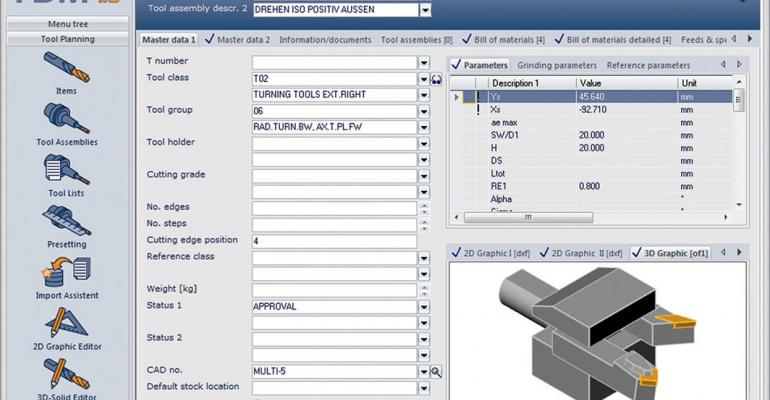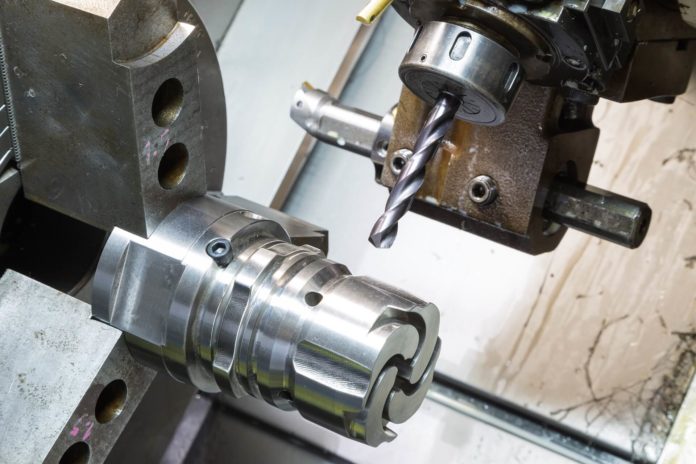Tweaking how cutting tools, inserts, and tool holders are selected and managed, and how jobs are set-up, may yield surprising improvements in tooling life, job throughput, and shop-floor efficiency.
Delivering optimal productivity from the shop floor is an ongoing quest for plant managers. One way to achieve that is to discover the hidden machine tooling costs that linger in the form of inefficient processes that might be eliminated or improved, often with a simple tweak.
By example, have you thought about testing new tooling products that can help streamline an old process?
Tooling, like most other products, evolves and improves. Sometimes a new product may cost more initially but yield a much higher ROI versus the old tool. For large plants, inserting new tooling products into old processes can lead to millions of dollars saved annually. The switch reduced a three-hour process to a 90-minute process, and yielded significant savings.
Inefficient tool management is another profit drain.
Many plants have improper or inadequate tool tracking processes, so they have difficulty locating tools they need and time gets wasted. Or, sometimes tools are thrown away before their time. To maximize the value of tools, consider using software packages like TDM Systems that help to optimize tool usage and tool life.

How about taking a fresh look at regrinds, which can restore a cutting tool to almost brand new, and at a cost that is about 50% of a new replacement?
Typically, a tool can last through three regrinds — but note that not every tool can be reground.
Here are five more tweaks that may reduce hidden costs and/or increase efficiency:
1. Average number of tool assemblies.
Look at the average number of tool assemblies used to manufacture parts. Are the tool assemblies firmly controlled and documented to maintain consistency so that every tool is always set up the same way and held the same way in a holder of the same class each time you run the part?
How about milling the face of a part? Do the folks on the shop floor have access to that information in a library or programming software and, if so, is it modeled? Is this consistent and across-the-board, so that lessons learned can be applied to every part and not just one?
2. Set-up time.
Everything matters in the machining queue, but the primary detail we need to look at is the set-up time. Analyze the current average set-up time to see who takes the longest time, and also determine what is the average time within the shop. Then, calculate a median that will become the shop standard. This way, it’s not a case of ‘win or lose’ or ‘pass/fail’; instead it’s about ‘what it is’ in the shop.
For example, we worked with a mid-sized machine shop making automotive accessory parts that for years had focused on a single, milling cutter that was perceived to be the highest problem on the job, simply because it chewed up a set of inserts every 20 minutes or so.
Lots of time and energy was spent on that milling cutter. Instead, the company analyzed every aspect of the set-up to gain a better view of what really caused the issues. That led to a slight change to the depth of cut, as well as to the toolpath determined for the cutter entering and exiting the part. With these tweaks, the manufacturer achieved double the previous output when using the specific tool. Instead of taking two weeks to run the lot, the job was reduced to a little over a week. Net-net, after completely analyzing all the processes for this part, a 45% throughput improvement was realized.
3. Expendables.
The average spend on expendable cutting tools should be somewhere from 3% to 6% of top-line revenue, depending on material mix. If you are operating within those parameters you should focus on other processes. Also, analyze the number of tool changes that cause the machine to be stopped for any reason, which drives added costs and results in a profit drain.
4. Tool procurement.
What is the process for purchasing tools and other products that are used on the floor? What are the steps taken in the procurement process for those products? Are you stuck in the old three-bid process?
Frequently, you can lower the cost for the way you procure these products just by auditing the methodology for acquiring them, dispensing them, or replenishing them. Wasted movement costs time and money. If you’re bringing these materials into a central storage area, you also need people to inventory, manage, and disperse them at the point-of-use.
For replenishing tools, instead of a minimum-maximum trigger, think about deploying an automated process that ensures the correct amount of materials are dispensed with the least amount of effort, while eliminating lost time and product waste.
5. Modern machining practices.
Are you deploying the best, most modern machining practices, and are you using the most advanced cutting-tool materials? Have you analyzed specifically how specific tools are held? Have you evaluated whether or not the holding mechanisms are the most ideal? You certainly don’t want to combine a modern cutter with an old holder, then move it like you always did.
Take a big-picture approach. Realize you may have to spend 30-50% more on that line item to get the best hold, movement, and training. But, having done that, the throughput will increase dramatically.
Finally, not all tools are equal and selection should not be based on pricing. Tool performance is best determined through testing, conducting proper training on usage, and quantifying by watching profit improve.
Just as important is finding a supply partner who has deep relationships with top-tier product manufacturers and can advocate on your behalf regarding both price and product choice. Pick a partner who is an expert on cutting-edge technologies that will drive process improvements and efficiencies.

















































